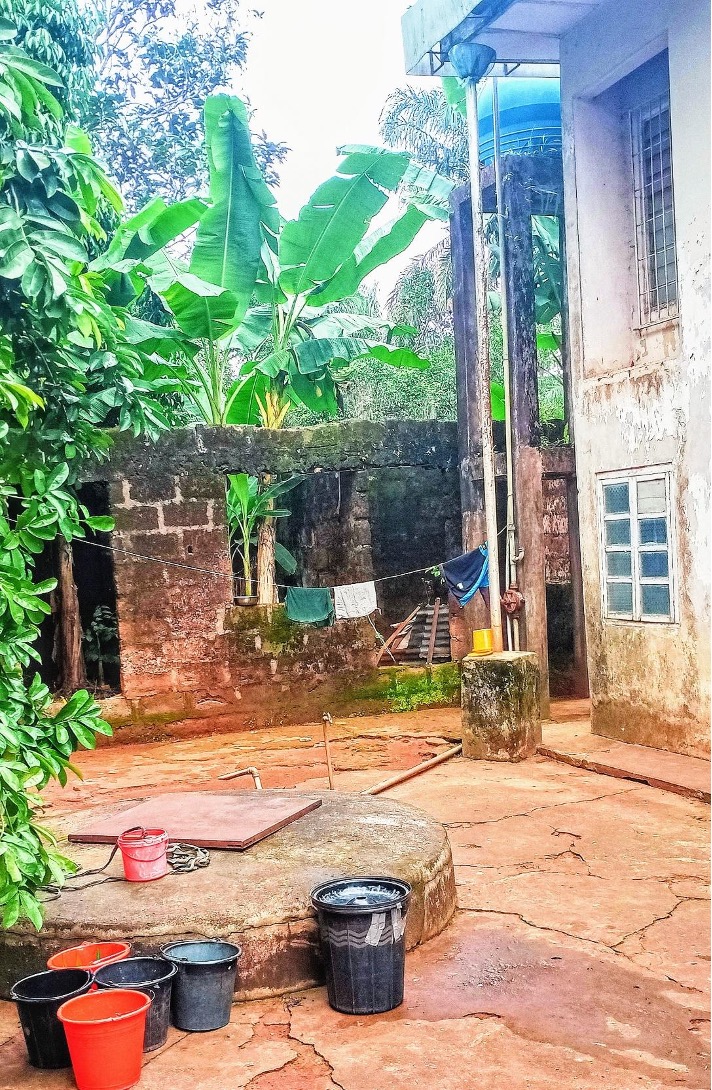Ngozi Margaret Oguguah (ELP 2021) | Principal Research Officer, Nigerian Institute for Oceanography and Marine Research Lagos, Nigeria
Growing up, I always looked forward to visiting my hometown, Awka Etiti in the Anambra State in the South Eastern part of Nigeria (the same locality with the world-famous author Chinua Achebe). Most of the visits coincided with the festive periods, Easter (April), New Yam Festival (August) and Christmas holidays (December). An activity that stood out for me was pumping water from the underground tanks/reservoirs into overhead tanks. The chore was mostly done enthusiastically by the kids, my cousins and I (we stayed in a large communal compound and had no less than 10 kids under the age of 16 at any point in time). We took turns pushing the handle of the water pump, after an adult must have primed it for us, until the overhead tank filled up.
When I visited recently to take the pictures below, I noticed that water is now drawn out manually using a small bucket and ropes because they do not have a regular power supply.
Awka Etiti is a landlocked town that does not have pipe borne water, and doesn’t have streams, ponds, springs, or lakes. You may now ask where is the source of the water we pumped? Rain! My people from time immemorial perfected the technology for harvesting rain. There is no compound that you will go to that does not have at least two underground reservoirs (also called ‘wells’) specifically built for storing rain water. One of the wells is usually reserved for drinking water purposes. Rain is collected via channels constructed on rooftops (usually made of metal sheets) and stored in the purposefully-built underground tanks.
It is always a source of amusement and ‘njakili’ (joke) when people from neighboring towns that have other sources of water come to fetch water in our town especially during the dry season.
My people also built ‘umi’ which is a shallow un-plastered ‘well’ normally in the flood path in each compound. Excess runoff water is collected there, and the water collected is used to water the household garden and damp down dust during the dry season.
This method of harvesting and storing rainwater has been passed from generation to generation and has helped my people to cope with water scarcity. We are ready to share how best to build the system. The underground tank builders are in high demand to build these tanks all over the country.
Fun fact: - My Dad used the soil excavated when the underground tank was built to fill the foundation of the house in the picture. His relations and friends adopted the same idea!
Picture of the underground tank with buckets waiting for water. Note the small plastic bucket that has rope tied to the handle, it is what is used to draw water out from the tank. Picture taken by Ngozi Oguguah.

